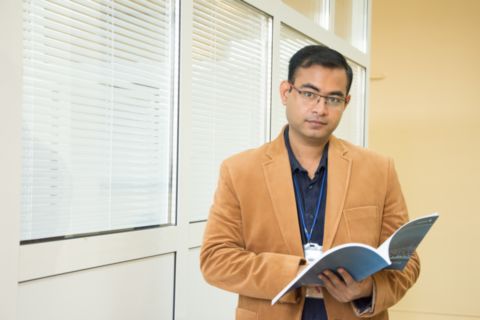Senior researcher at the Big Data and Machine Learning Laboratory at South Ural State University, Professor Sachin Kumar, has developed a neural network model for brain tumour detection on MR images.
"The neural network was trained on a publicly available set of 3064 MR images from 230 patients," says Sachin Kumar. "Three types of tumours were detected: gliomas, meningiomas and pituitary tumours. Our model combines elements of convolutional neural networks (U-net and CNN) for tumour segmentation and classification, which has increased its efficiency to more than 99% accuracy."
On a data set of patients with an already confirmed diagnosis, 99.39% were diagnosed with the disease, and only 0.61% were incorrectly diagnosed as "healthy" by the system.
To achieve this result, the neural network went through 150 training cycles. The algorithms were implemented in the Python programming language.
"When training the neural network, each image was initially segmented into 9 parts," the Professor explains the essence of the technology. "A vantage-point tree (or VPT) was built, the indicators of the nearest pixel neighbours were calculated, labels were created, which were then used to calculate probabilities."
Then a U-net convolutional neural network was used. A U-net is a special architecture for semantic segmentation tasks, such as, for example, segmentation of brain tumours. It consists of two main parts: an encoder and a decoder. The encoder collects and reduces spatial information in the image using convolutional layers and pooling operations, while the decoder transforms it to create a segmentation map.
"Convolutional Neural Networks (CNN and U-Net), Recurrent Neural Networks (RNN), and Long and Short-Term Memory Networks (LSTM) are all deep learning technologies," explains Sachin Kumar. "Essentially, deep learning is useful when the volume of data is large enough that simple machine learning algorithms cannot cope with it in an acceptable time. Deep learning provides high accuracy when working specifically with big data."
Professor Kumar is confident in the effectiveness of his model, but warns against hasty implementation. And it is primarily...a matter of geography.
"Public datasets are collected from a specific region of the planet," explains Sachin Kumar. "But the lifestyle and standard of living of the population, ecology, nutrition, water and air quality, and other environmental and health parameters are different in each country."
Therefore, before introducing it into hospital practice, the neural network must be additionally trained on MRI data from a specific country or region. But this is the case only for now.
"The goal of the project was to develop a more accurate model compared to existing ones. And we succeeded," says the researcher. "The next step is to collect and combine data from other countries and, finally, develop some kind of universal model that will be approved and implemented for use in hospitals around the world."
Sachin Kumar is one of seven staff members of South Ural State University who received the 2022 SUSU Recognition Award, winner in the Science category. His work was supported by a grant from the Russian Science Foundation. With his discovery, he also took part in the project FENU-2020-0022 "Mathematical Foundations, Models and Algorithms of the Digital Industry" under the leadership of Professor Leonid Sokolinsky, which was supported by the Ministry of Education of the Russian Federation.




